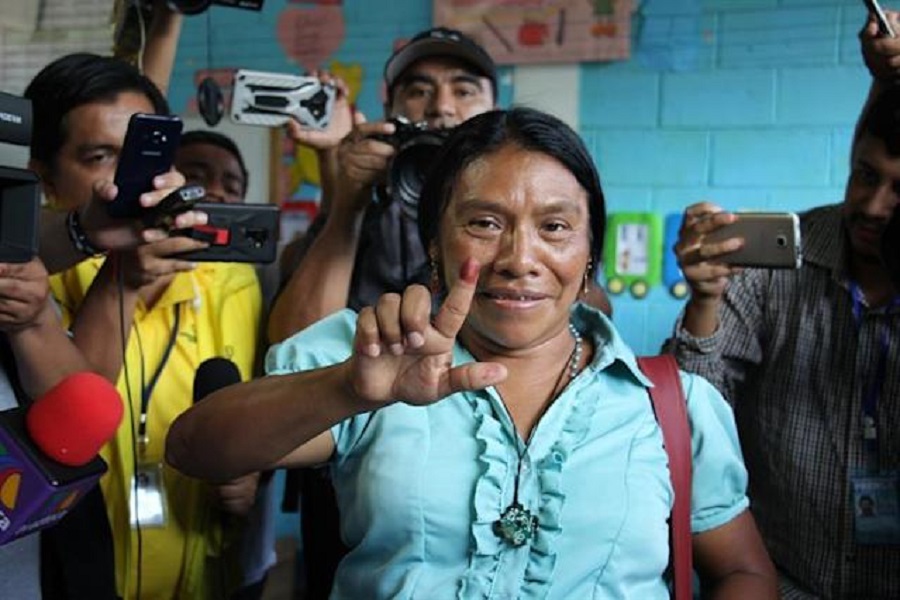RIO DE JANEIRO, BRAZIL – Ex-presidential candidate Mam Thelma Cabrera urged Guatemalans on Wednesday to promote the foundation of a Plurinational State, which contemplates and is governed by indigenous peoples as a solution to the political crisis affecting the Central American country.
In a conference organized by the Committee for Peasant Development (CODECA), the movement of which Cabrera has been a member since its foundation in 1992, she emphasized that it is time for Guatemala to hold a National Constituent Assembly that will lead to the creation of a different State that will not serve the “creole” interests that “promote corruption”.
“We can act based on our decisions taken in assemblies, but we must be united in this demand because right now in Guatemala we do not have a State, because it is corrupt and it is urgent to found a Plurinational State,” she said.

The proposal for a new assembly that contemplates the four peoples or “nations” (Maya, Xinka, Garifuna and Mestizo) arose from the “street struggle” that began in 2015 against the government of ex-president Otto Perez Molina, imprisoned that year accused of corruption a few months after leaving office.
On Thursday, Guatemalans will stage a national strike against alleged corruption acts by the head of the Prosecutor’s Office Consuelo Porras, and president Alejandro Giammattei, disclosed last week by the anti-corruption prosecutor Juan Francisco Sandoval after being removed from his post.
THE CREOLE “FEAR”
Academic anthropologist Mayan K’iche’ Irma Alicia Velásquez Nimatuj also took part in the conference organized by CODECA, warning that the Creole elites who founded the current republic of Guatemala “are afraid” of an indigenous movement that could bring about changes such as those experienced in Bolivia with Evo Morales or about to be implemented in Peru with the new president Pedro Castillo.
These “corrupt” elites are “afraid of plural governments, from the communities” because they see “the example of Bolivia, which is against a number of policies aimed at extracting all their productivity from the peoples and also fears in Peru today, because Peru and Guatemala have similarities in terms of poverty and the invisibility of the indigenous peoples,” she added.
Velásques Nimatuj pointed out that the severe crisis is not of the peoples, but of a “creole republic founded by corrupt elites who were not willing to stop the Spanish Crown and whose ideas are based on corruption, on the colonial state and whose social and economic model is based on the labor of the indigenous people and the takeover of land to make it produce.”
Such elite benefits from a ladino or mestizo middle class that is also afraid of the indigenous because “in their minds, the Indians are part of servitude,” she added.
“It is only a matter of time before Guatemalan elites leave these spaces and a different nation will finally emerge, a spring like the one that took place in 1944, perhaps with its own facets and according to our current reality,” the anthropologist concluded.
Between 1944 and 1954, Guatemala was ruled by two governments resulting from the 1944 Revolution led by Juan José Arévalo and Jacobo Árbenz, who was deposed in a coup d’état in 1954 with the support of the U.S. Central Intelligence Agency (CIA).
According to official figures, 59% of Guatemala’s 16 million people live below the poverty line and 1 in 2 children suffer from malnutrition.

